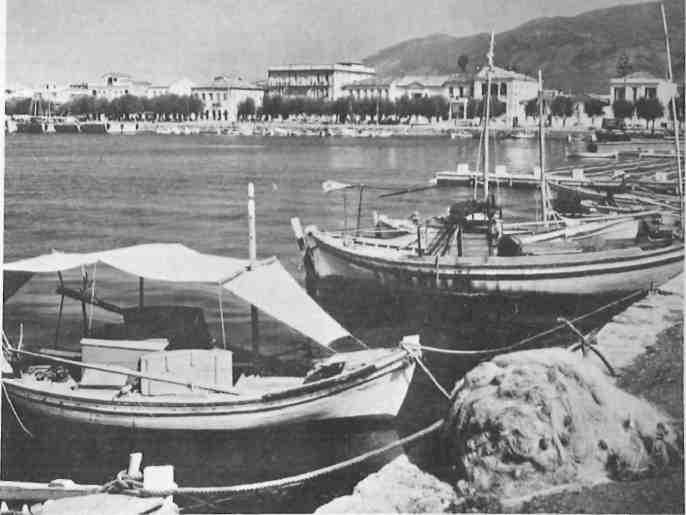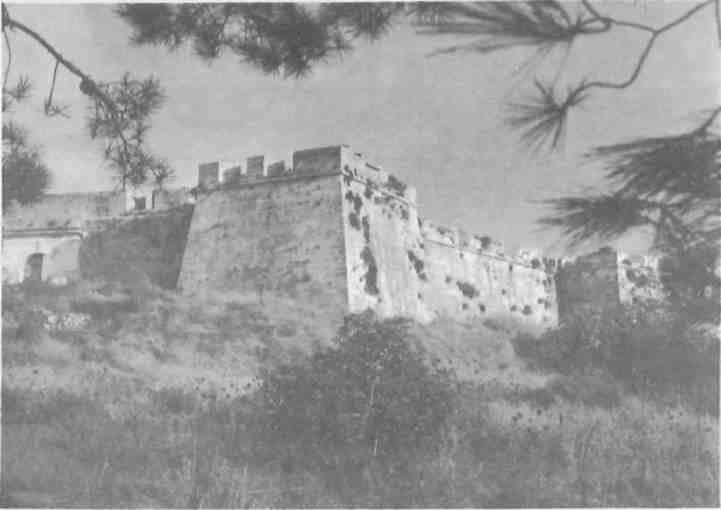Photographs by Nikos Kontos
When I told one of the librarians at the American School of Classical Studies that I was going to Kalamata she promptly exclaimed, ‘Panaghia Mou’ and retired to smoke a nervous cigarette. A bad omen, you might think. People tell you all sorts of horror stories about Kalamata: ‘It’s full of olives’, or ‘horrid and industrial’, some opine. I have come to the inescapable conclusion that none of these people have ever been there!
We rumbled towards Kalamata on an overcrowded bus from Argos filled with friendly people all anxious to point out things of interest to the strange archaeological xeni sitting in the aisles. The entire bus load sniffed loudly as we passed Tripolis and said, ‘Ah, garlic from Tripolis’. Of course, they could not smell a thing but they thought they should. We finally arrived in a cloud of dust at the upper end of the town and disembarked with some surprise: it was grotty but not horrible. We found an amusing hotel, The Megali Britannia, a D-class establishment filled with stout, elderly people in their underwear fanning themselves languorously. It has a remarkable resemblance to a slightly decrepit hotel in Somerset Maugham’s Malaya. After settling in we went off to explore.

The city has three major areas: an upper city below the old acropolis and near the bus terminal; a middle area near the train station; and the harbour area. The middle area is the city’s centre and pivots on a long platia formed by a widening of the main street. All the best kafenia are on this square where the entire town seems to promenade every night. It would be quite easy to stay there all evening drinking ouzo and eating an occasional souvlaki. There is also a good restaurant on the square. If you can tear yourself away, however, hop on a convenient bus which goes to the harbour where the shore is lined with fine tavernas specializing in fish, grilled meats, and slow service. In good weather you can sit outside under the pines bordering the water and enjoy your dinner while watching the lights of numerous small fishing boats in the distance. The buses run until at least 11:30 so you need not rush. There are several hotels located near the beach.
The archaeological museum is in the upper part of the town. It contains a number of well-displayed antiquities including a good Roman mosaic, a burial group from Nichoria, many Mycenaean objects, and some remarkably unattractive prehistoric pottery from the site of Dorion. (You can amuse yourself by hazarding a guess as to when several of the bronzes and an amber seal will disintegrate if not promptly treated.) The museum is in a fine old house which has been attractively restored. One of the most pleasant features of the museum is its location in the Central Market area where innumerable old ladies sell fresh fruits and vegetables from open stalls or from sheets spread out on the ground. You can also buy locally produced ouzo (very good), and Kalamata’s famous olives. They really are good, and they make an excellent gift. Many local handicrafts survive in this district: one charming old woman weaves straw hats to order on the spot. Another local product is silk scarves which can be found in a wide variety of unusual colours and designs.
An interesting side trip from Kalamata is to the site of Ancient Messene, below Mount Ithome, which should not be confused with the modern town of Messini which you pass if going by car or bus on the way to Mavromati, the village that occupies part of ancient Messene. At the far end of Mavromati is a sign indicating the path that leads to the site. Should you travel by rail, the train lets you off at the village of Valira from which you walk for about an hour and a quarter up to the pleasant monastery of Vourkano below the saddle between Mounts Ithome and Eva. If you do this take a walking stick. Water of high quality is available just below the monastery. After leaving Vourkano, turn left and then right. In about twenty minutes you will arrive at the saddle and the Laconian Gate in Messene’s wall.

The walls of Messene city are among the best preserved in Greece and are extremely impressive. They enclose a huge area, far larger than the built-up city area, designed to allow enough space for crop raising and for refugee encampments in times of trouble. The walk from the Laconian Gate down to the site of the administrative Agora which was a religious and civil centre takes about twenty minutes (highly athletic people may wish to climb Mount Ithome to see the Acropolis and a surpassing view). The modern village of Mavromati is just above the ancient site and has several kafenia but no restaurants. A good place for a rest is near the town’s fountain. The best way to reach the Agora is via a path which can be found if you go left when you get to the main road. The path is on the right side of the road near the last house of the village (the house is below the level of the road) and looks rather like a stream bed! The Agora itself has a very religious flavour: there are several cult rooms on the west side and a major temple in the middle. To the east is a very well-preserved lecture hall — odeon—and the North side is occupied by a major sanctuary to the cult of the Roman Emperors. The entire Agora was lined by a Corinthian colonnade and fragments of the entablature (ornamented with bull skulls) and column capitals litter the area. The capitals are interesting because of the winged Eros which lurks among the acanthus foliage (it is not a figure of Victory — Nike — as often described: the discerning viewer will find it to be male). When you finish looking at the Agora, return to the main road and walk through the town to the west. You will soon pass a sign pointing to the ‘Ithome Archaeological Site’ (the path to the Agora if you drive) and, a little further, a small museum which may well be open today. (It’s been in the works for quite a long time). After another ten minute walk, you will arrive at the Arcadian Gate. It has two doorways at each end of an oval courtyard so that if invaders managed to get through the outer gate they could be shot down as they milled about in the court. The astoundingly well-preserved stretches of wall on both sides of the gate (several three-story towers are still standing) can easily be seen from the gate itself.
Leaving Kalamata’s glories we bus to Pylos. Pylos is located on Navarino Bay, the site of the great naval victory of the combined English, French and Russian fleets over the Turko-Egyptian armada. This was the battle which really won the Greek War of Independence for the Greeks. The long island which closes the bay is Sphacteria famous for being the site of the capture of a Spartan force by the Athenians in 425 B.C., the first time such a defeat had ever happened. The town itself is rather odd: it is quite beautiful to look at but not very nice to stay in. There are two expensive B-class hotels, two quite revolting D-class, and a very small number of rooms for rent. Even a small number of tourists swamps the town. It is quite surprising how underdeveloped this whole area of the Peloponnisos is from a touristic point of view. There are two decent restaurants on the harbour both of which tend to be understaffed and overwhelmed by the clientele. While in the town of Pylos you must not miss the fortress or the little museum. The museum seems to be just the right size and contains a good number of very interesting objects dating from Mycenaean times to the 1821 Greek Revolution. Everything is labelled in English and you should note the extraordinary pair of Late Roman bronze statues of the Dioscouri from Kyparissia. They are quite crude and were probably the best that a local sculptor could do. The fortress is of late-Medieval, early-modern date and has a large outer bailey and an inner bailey/citadel. It was partially rebuilt by the French in 1829 so it seems almost brand new and is very attractive. (French forces were very active in this area during the War of Independence and helped to rebuild many sites destroyed in the struggle against the Turks). There is a mosque, now a church, in the outer bailey which is very attractive from the outside. The citadel commands a splendid view but is rather upsetting since it was used as a prison until quite recently and must have been very nasty for its inhabitants. Another chilling thing is the memorial to a Civil War massacre below the Church.
Two places to visit from Pylos are Methoni and the Palace of Nestor. Methoni is a small town built in the late 1820s by the French who removed it from the great fortress at its end. The fort of Methoni is basically Medieval and like that of Pylos is almost perfectly preserved. There is a citadel facing the town protected by a great ditch and massive bastions. You enter the main area of the fort through an elaborate triple gate with many turnings designed to trap attackers. This extensive area was reserved for the Medieval town few remnants of which remain. The Cathedral is partially built on the walls near the sea gate, which leads to a little, lighthouse-like fortlet on a small island. The entire area is almost aggressively photogenic! After viewing the fort you can have a very nice swim (showers are available on the beach) and have lunch at one of the sea-side restaurants (closed from 4 to 7). There are at least two hotels and large numbers of rooms for rent so Methoni might be a nice place to stay.

The Palace of Nestor is an absolute must. The road to the site, north of Pylos, passes the proposed area of a new shipyard complex on Navarino Bay, a development which will seriously damage, if not destroy, the beauty of one of the most historic areas of Greece. The Palace, almost certainly that of Homer’s Nestor, is idyllically located amongst an expanse of vineyards (the flat areas you see in vineyards all over this part of the Peloponnisos are for drying currants). All the information you need to know about the site can be found in Blegen’s guide book (see box) but you should try to envision the palace as being half-timbered and somewhat like an Elizabethan building. You should particularly note all the storage areas for different types of olive oil. One has the impression that the Mycenaeans had a taste for subtle differences in the flavour of olive oil. You should also look out for the pry holes in the stone blocks of the wall foundations. You can compare them with Classical pry holes in other sites. There is an impressive, reconstructed Tholos tomb nearby. The site’s museum is several kilometres up the road in the village of Hora (both the site and Hora can be reached by convenient buses from Pylos). Almost everything found in the palace has been superbly displayed. The fragmentary frescoes, linear Β tablets and gold objects will interest everyone as will the large number of well-made pots. The numerous restored drawings of frescoes and pottery (you may well think some of these water-colours are photographs!) are by Piet de Jong, perhaps the finest archaeological artist of this century.







